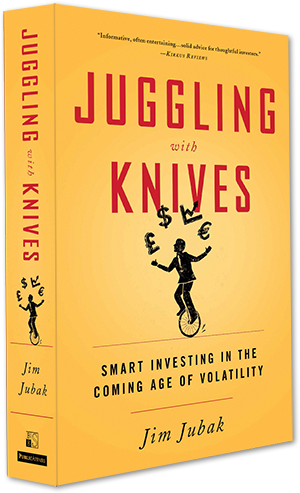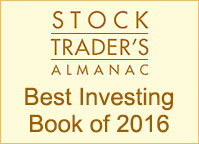


A pick to add exposure to an improving Argentina in my Volatility Portfolio

Market moves to risk off just before start of biotech conference season, opening for short term biotech trades? Adding Nektar to my Volatility Portfolio
Today, March 6, was a day for risk off. The indexes ended up negative for the day but not by a huge amount. The Standard & Poor’s 500 stock index, for example, was down just 0.33% on the day.
Riskier indexes took a bigger hit. The NASDAQ Composite was off 0.37% and the small cap Russell 2000 was lower by 0.69%. The iShares NASDAQ Biotechnology ETF (IBB) was down 0.88%.
But if you were looking for bigger drops today, the place to cast your eyes was on individual biotech stocks, especially those that had been rallying recently. For example, Incyte (INCY) was off by 1.85%. The Medicines Company (MDCO) fell 2.28%. Ionis Pharmaceuticals (IONS) got a double dose of downward pressure from the market in general and from bad news on a drug trial and tumbled 8.26%.
This dip in biotech stocks comes at, what can I call it, a very interesting time. Especially if it continues for a day or two or three.
That’s because we’re right at the beginning of the medical conference season, which gives biotechs with any news at all a big showcase for the promising new drugs in their pipelines. The American College of Cardiology’s annual conference runs from March 13 to 15 in Washington, D.C.. The annual meeting of the American Association for Cancer Research begins on April 1 and extends to April 5, also in Washington. The American Academy of Neurology meets from April 22 to April 28 in Boston.
How big a showcase can one of these conferences be for a biotech company?
Here’s the opportunity for Incyte at the American Association for Cancer Research meeting, according to the Bioinvest’s Medical Technology Stock Letter (Bioinvest.com.) Incyte will present 20 abstracts from its R&D portfolio at the conference including a clinical presentation of the dose-escalation phase of the ongoing trial of its FGFR 1/2/3 inhibitor, and preclinical data from inhibitor programs targeting PI3Kd, LSDa, JAK1, BRD/BET and IFFR4, as well as from its epacadostat and immuno-oncology programs.
Whew!
Companies don’t go to these conferences to announce bad news and failing tests. So these meetings can provide a big dose of market-moving good news.
Besides Incyte, other biotechs that look to be in a position to get a boost from these annual meetings include Acadia Pharmaceuticals (ACAD) and Ionis from the American Academy of Neurology meeting; and Nektar Therapeutics (NKTR) at the American Association for Cancer Research Meeting.
Trying to figure out where you might get the most conference bang for your buck can get pretty complicated. Incyte is likely to make the biggest splash during meeting season but the stock has run up strongly so it doesn’t necessarily offer the biggest potential pop. At the March 6 close at $134.38 the shares are less than $10 below my target price of $142. Acadia is promising since it has pulled back lately. I think my target price of $42 set back in November now lags the progress at the company so as of this post I’m raising my target to $55, which gives the stock almost $20 a share to run higher from the March 6 close at $36.79. Nektar Therapeutics might offer the most upside from a good conference season since the stock has been hurt by some disappointing research results and the conferences offer a big chance to recoup. The company is also at work in a currently hot area where its new painkiller, an opiod with less likelihood to produce addiction, addresses the current national opiod epidemic. (The drug would be the first novel opiod molecule in decades.) The current trial of that molecule has a fairly high chance of disappointment, which could take the stock down 30% or so. But the company is also presenting five data abstracts at the American Association for Cancer Research meeting from its immune-oncology pipeline. Nektar is definitely the high risk/high reward pick from the group. I’d say the target price is $28 with the downside to $10. The stock closed at $14.38 on March 6.
If you’re looking for leverage, all of these stocks offer options and all except for Nektar offer long-term LEAPS options. The problem is that the implied volatility, and thus the cost of these options, is relatively high. The implied volatility on Incyte’s January 19, 2018 call option with a strike at $140 is 45.89%. That means you’re paying a lot for the option since demand from other traders for this call, just 5% above the recent price, is very heavy. That heavy premium is present pretty much everywhere I’ve looked. Acadia’s January 19, 2018 call at $45 comes with implied volatility of 52.48%. The implied volatility of The Medicines Company’s January 19, 2018 call with a strike at $70 is 61.98%.
That’s just a fact of life for volatile biotech’s, however. According to IVolatility.com the LOW implied volatility for a 180-day call option on Inctye is 39% (back on February 23, 2017). That’s the kind of implied volatility you get at the high for implied volatility in other sectors. The HIGH implied volatility for Inctye is 62.99% on April 11, 2016. To take another example, the implied volatility for a 180-day call on Acadia ranges from a low of 55.3 to a high of 76.86. (For future reference, the high implied volatility according to the historical data tends to come in March and April and the low implied volatility occurs in October and November. Makes me wonder if there’s not an options play on this seasonal pattern with a buy in October and a sell in April on the rise in implied volatility.)
Considering all these alternatives–and the fact that I already own Incyte, Ionis, and Acadia in my Jubak Picks portfolio–as of tomorrow I’m going to add Nektar Therapeutics as a volatility play on meeting season to, what else, my new Volatility Portfolio.

If not the VIX, what to watch for signs of volatility? I’m adding gold to my Volatility Portfolio
The most widely followed volatility measure, the CBOE S&P 50 Volatility Index (VIX), is going nowhere. The VIX, commonly known as the fear index, closed at 11.37 today, February 6 and it is stuck below both its 50-day moving average of 12.09 and its 200-day moving average at 14.01.
Which doesn’t mean there’s no volatility or no fear in the markets. It’s just not reflected in the market for puts and calls on the S&P 500.
Other measures, however, are flagging uncertainty in the financial markets. Some politically-inclined analysts are, for example, looking at the gap between the VIX and the Global Economic Policy Uncertainty Index. It’s now at its highest level on record. Others, unwilling to give up on the VIX completely, are looking at the CBOE Skew Index, which measures the price of buying protection against more dramatic moves in the S&P 500. The VIX itself may not be signaling an increase in worry but investors are willing to pay to hedge the more extreme if less likely downside outcomes in the tail of the bell curve.
And then gold. We all know that gold doesn’t go up when interest rates are expected to rise–except when expectations for inflation–which is good for gold–and worries about market uncertainty outweigh expectations for rising inflation.
And, strikingly, that’s where we seem to be now. The yield on the 10-year U.S. Treasury has climbed to 2.44% from 1.77% since the November election.
But gold, rather than wilting is showing solid strength. Gold and silver ETFs are among the best performers on a 1-month and year-to-date basis on fears that inflation in the United States and other economies, such as Germany, is showing signs of breaking out of its target bounds. Gold mining stocks tend to be more volatile than the price of gold bullion ETFs (such as GLD, the SPDR Gold Trust) since the costs of miners are relatively fixed making a change in gold prices a huge deal for their bottom lines. The Juniors are more volatile than the bigger companies in the VenEck Vectors Gold Miners ETF (GDX) because their balance sheets tend to be more leveraged and the stocks themselves are riskier. Decide for yourself how much risk you want to add to your portfolio. The VanEck Vectors Junior Gold Miners ETF was up 7.72% today. The senior ETF climbed “just” 3.67%.
Before we leave the subject of gold and volatility, however, there’s one pattern worth mentioning. Most of the time, indeed, gold falls when interest rates rise. Logical. However, when inflation fears are enough to overwhelm fears of an interest rate increase, the combination can signal a negative move in the market. Three consecutive quarters of rising benchmark bond yields and rising gold prices preceded previous market falls including the 1973-1974 bond market crash and Black Monday in 1987, Chris Flanagan at Bank of America told Bloomberg. The yield on the 10-year Treasury has climbed to 2.44% from 1.77% since the November election. Gold, which has been among the best performers in the shorter term, has moved sideways in that longer period.
Something to watch.

My second pick for my new Volatility Portfolio is a coffee ETN, JO





